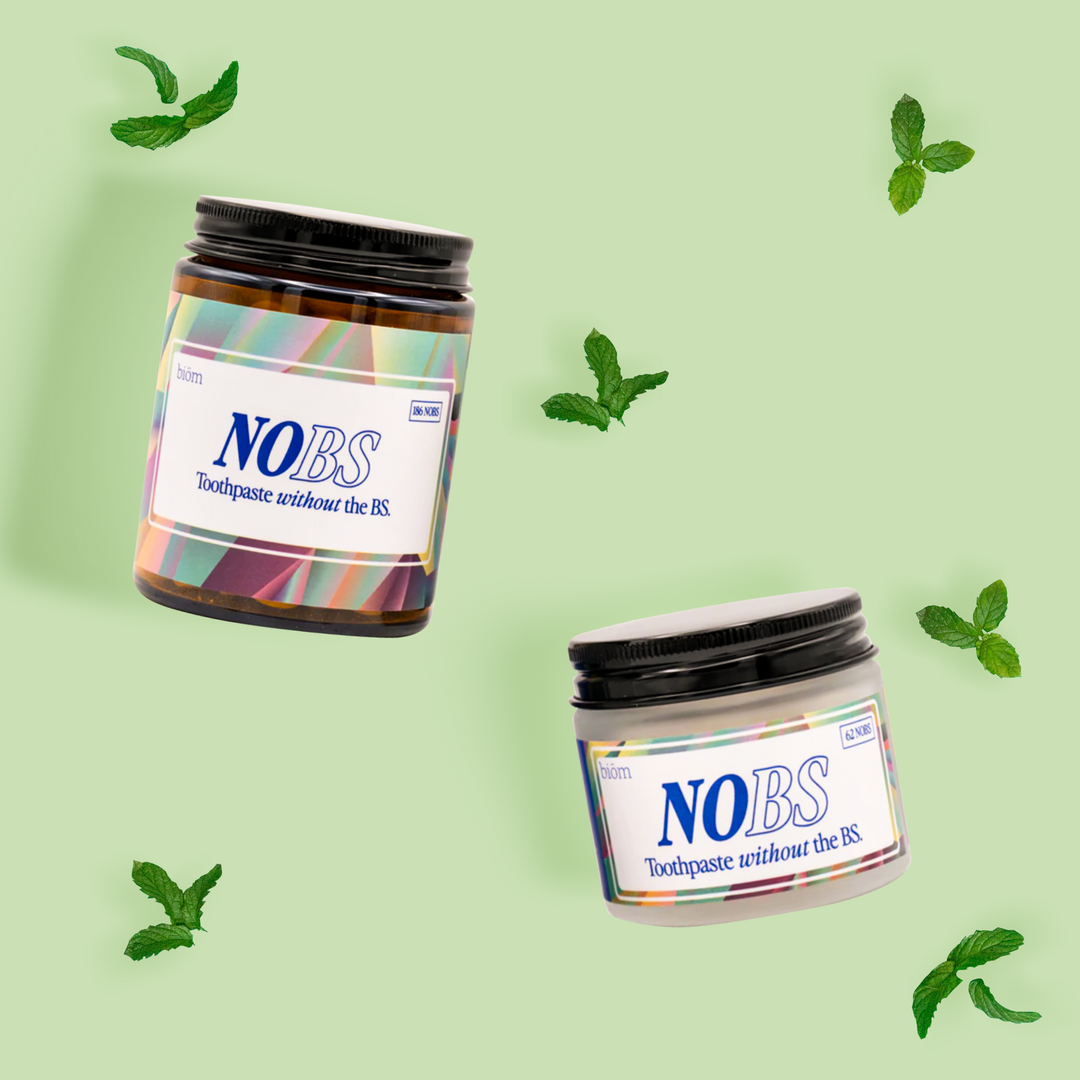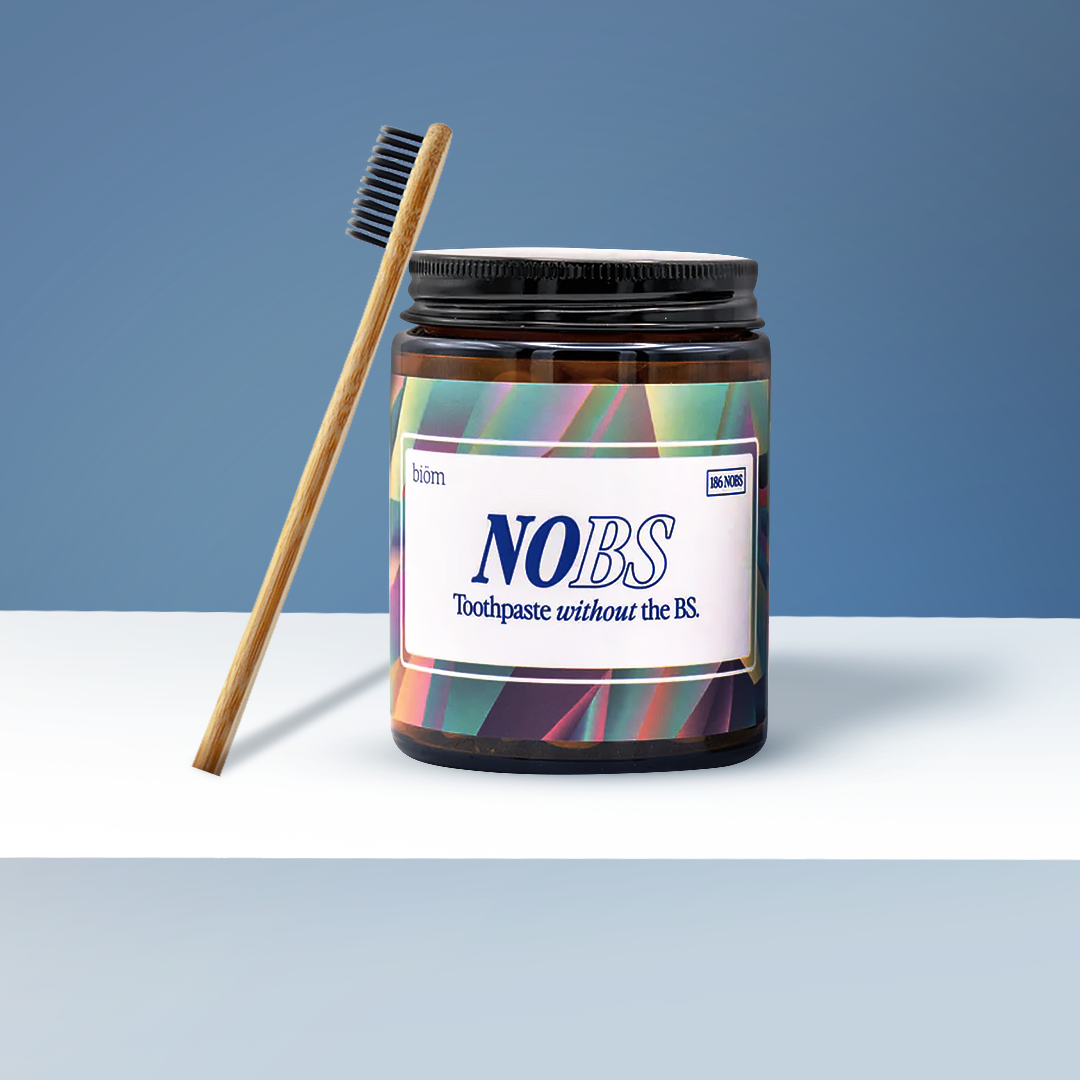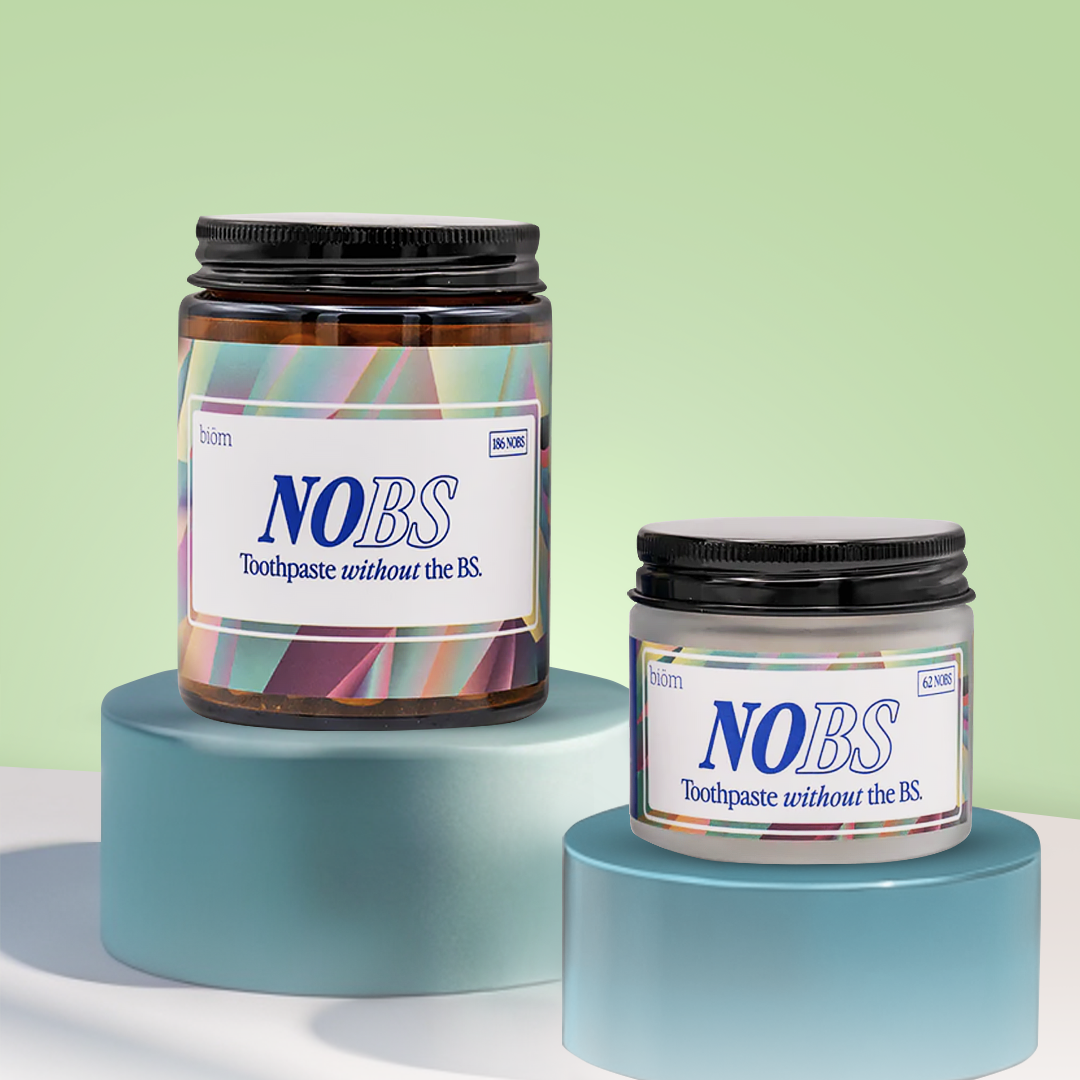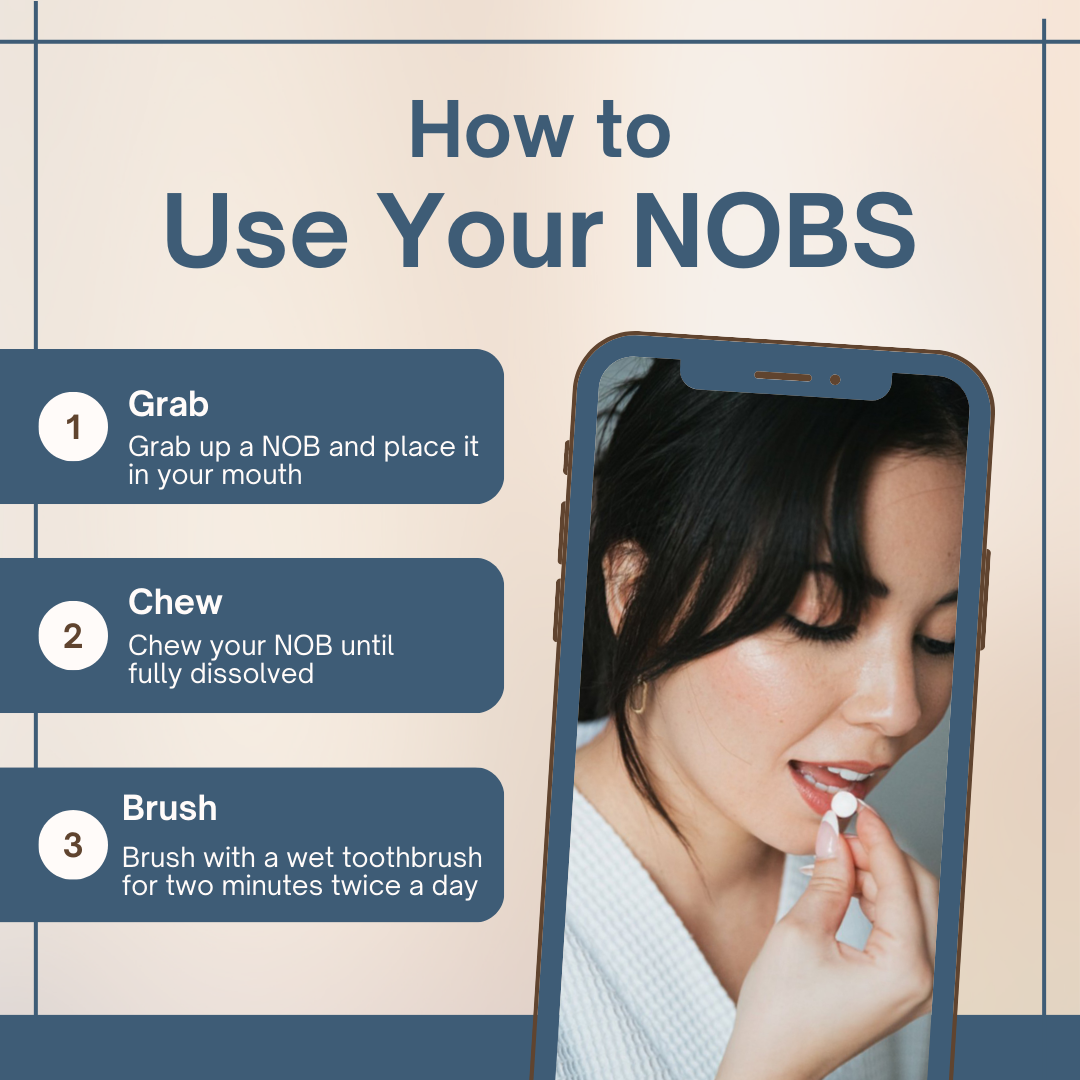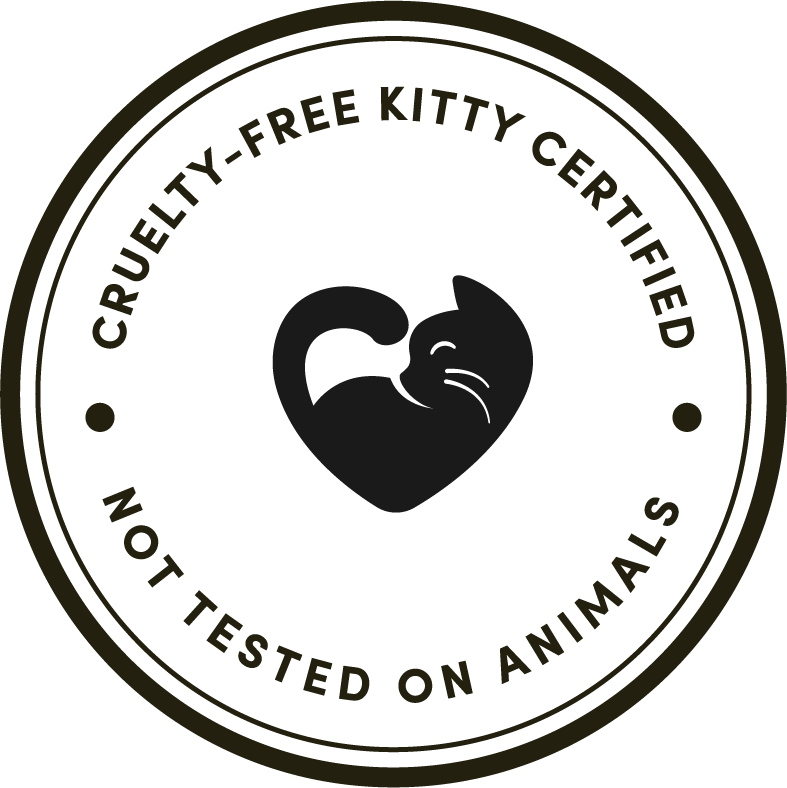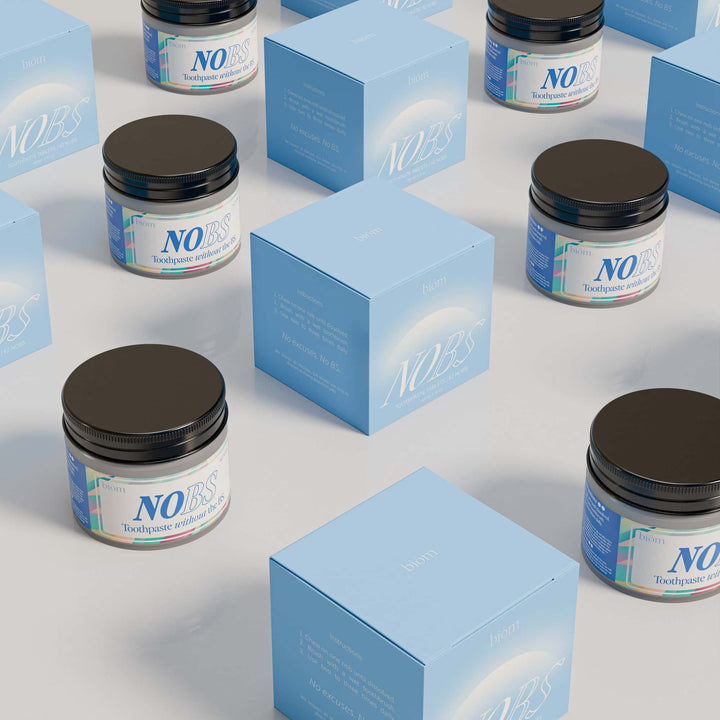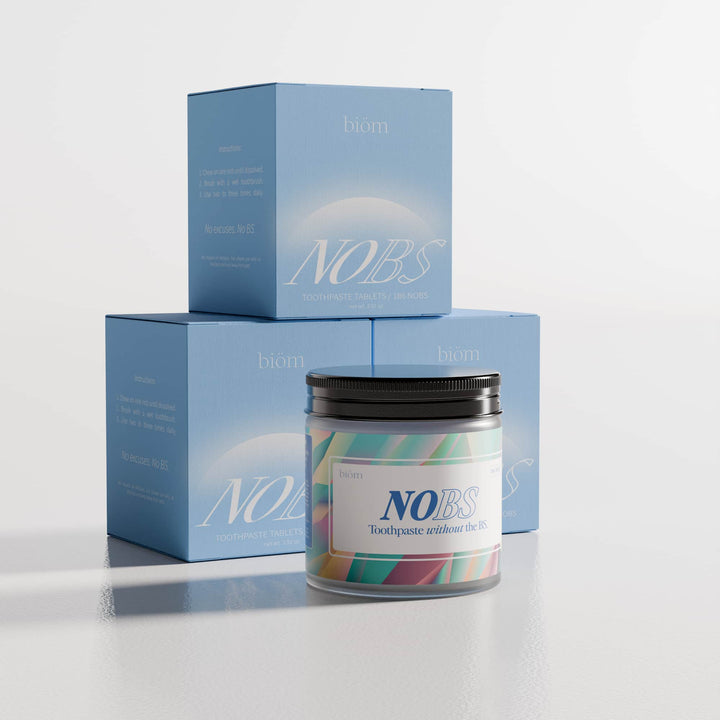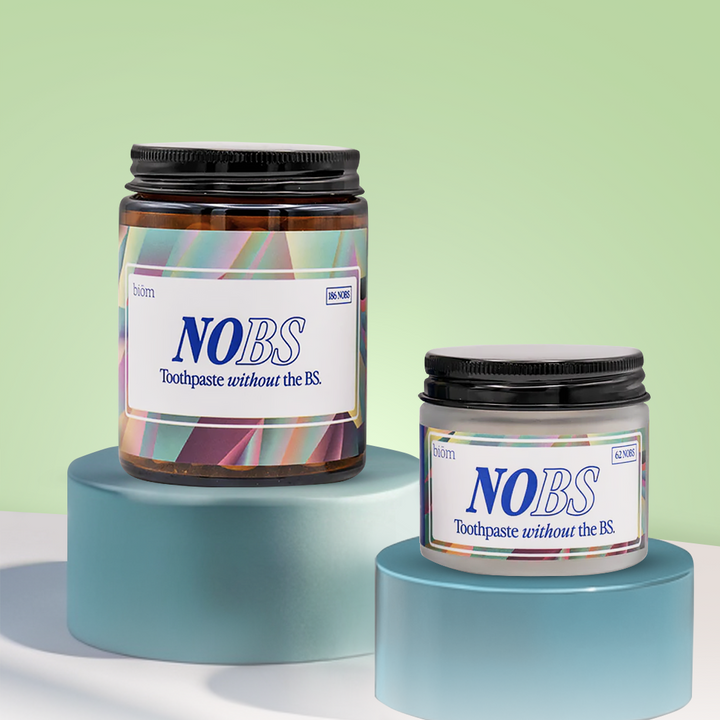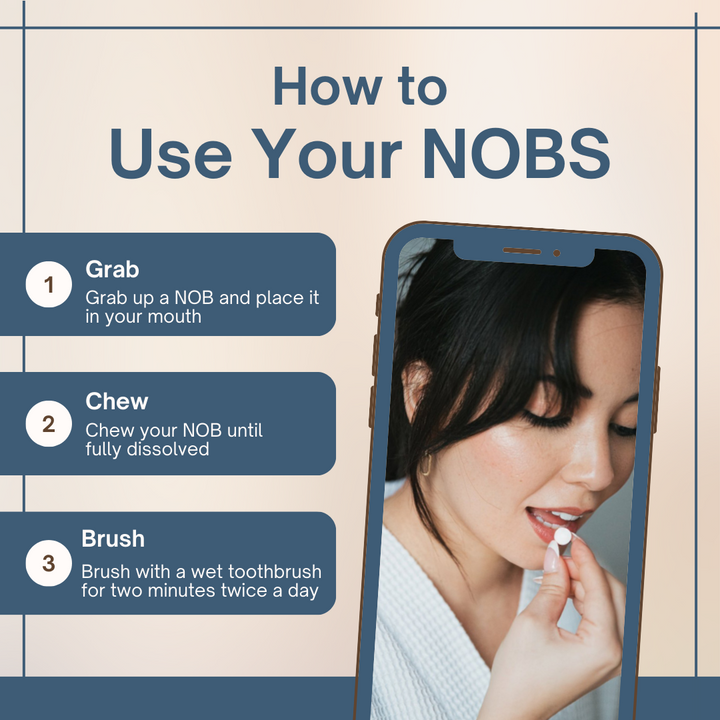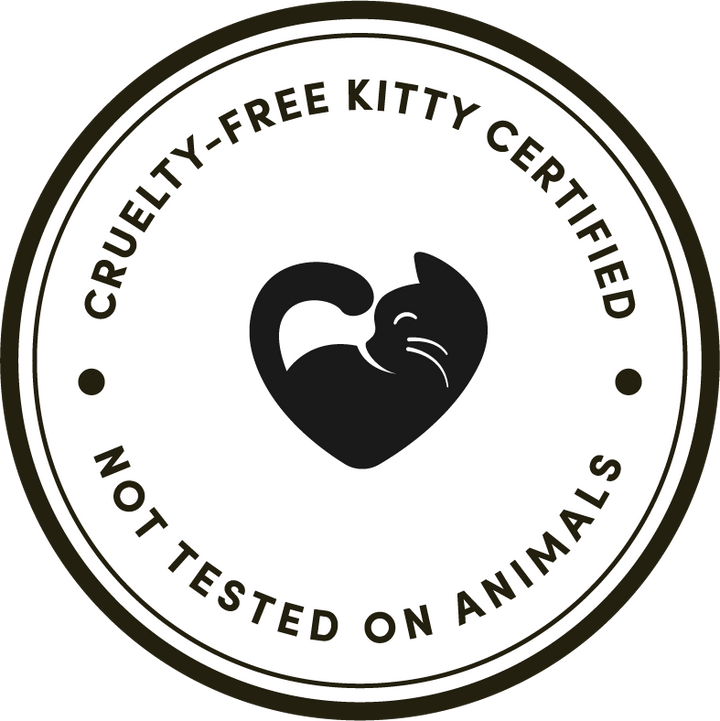How Long Should You Oil Pull?
According to Ayurvedic tradition, you should oil pull for about 15-20 minutes in the morning on an empty stomach. However, it's important to recognize that while this is an ancient practice, our current scientific evidence supporting the correct time duration to oil pull is limited.
Anecdotally, many practitioners report they have positive experiences with oil pulling and experience benefits like fresher breath, less plaque buildup, and improved gum health. However, it's important for us to take this anecdotal evidence with a grain of salt because we don't have scientific consensus on the benefits of oil pulling.
Therefore, while adhering to the generally recommended 15-20 oil pulling duration can be a good starting point, you'll want to adjust the duration based on your personal comfort and experience.
In this article, I'll explain everything you need to know about how long to oil pull.
What is oil pulling?

Oil pulling is a traditional Ayurvedic practice for improving oral hygiene and for spiritual benefits.
It involves swishing oil in your mouth for about 20 minutes to remove bacteria and dislodge buildup between your teeth. Back then, this process was used to treat bad breath and gum disease and, while less common now, continues to be practiced today for similar benefits.
While oil pulling was originally conducted with sesame and sunflower oil, virgin coconut oil is more common now. Any oil, including sunflower oil or olive oil, can be used for oil-pulling therapy, but coconut oil has been popularized due to its high lauric acid content and pleasant taste.
Just remember, to maximize the oral health benefits of oil pulling, we recommend brushing with toothpaste tablets, flossing with expandable floss, and using a tongue scraper daily.
How does oil pulling work?
Oil pulling works by dislodging harmful bacteria from between your teeth before it has a chance to organize into plaque.
Essentially, the oil helps emulsify the bacteria and debris in your mouth, allowing it to be spit out after ~20 minutes. Clinical and diagnostic research suggests that this practice supports a healthy oral microbiome.
That being said, it takes about 20 minutes for oil pulling to have a significant impact on your oral hygiene. Therefore, it is one of the more labor-intensive oral health practices and may not fit into your daily overall health routine.
Many people enjoy oil pulling as it's gentle enough to do with crowns and fillings while others believe that in comparing mouthwash vs oil pulling, mouthwash is a more convenient option.
Benefits of Oil Pulling
Proponents of oil pulling suggest that it has benefits that include:
-
Reducing oral bacteria associated with cavities and gingivitis
-
Removing plaque buildup along the gumline
-
Whitening teeth
-
Eliminating bad breath
-
Preventing periodontal disease progression
-
Lowering risk of tooth decay
These potential benefits largely come from oil pulling’s presumed ability to reduce bacterial load in your mouth.
However, there is no academic consensus on the benefits of oil pulling due to the lack of clinical research.
Bacteria
There is some evidence that oil pulling may reduce the number of bacterial colonies living in your mouth.
However, this is a newly evolving field of research and more evidence is required to fully understand the impact.
Bad Breath

One of the key benefits is that oil pulling removes bacteria. By reducing the number of bacterial colonies in your mouth, oil pulling may have some impact to reduce the incidence of halitosis.
Plaque Buildup
Oil pulling is an effective treatment against plaque. In fact, one study found that "both coconut oil and sesame oil can be used for oil-pulling therapy with the aim of plaque regrowth inhibition".
Interestingly, this study also found that this same mechanism had a positive impact on tooth staining as well.
Gingivitis and Inflammation
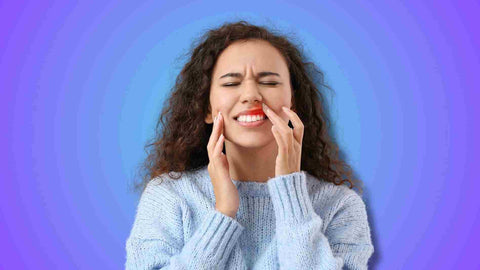
Preliminary evidence shows that oil pulling may help fight gingivitis by reducing your plaque index. However, it is unclear how significant these results are and whether they can be replicated.
Does oil pulling whiten teeth?
According to the American Dental Association (ADA), there are no reliable scientific studies proving that oil pulling can whiten teeth or significantly improve oral health.
While some claim that swishing oils like coconut oil helps with teeth whitening, the ADA points out that these effects are not supported by scientific research.
Oil pulling may reduce bacteria and plaque, but it does not contain ingredients that are proven to whiten teeth.
For more effective and reliable whitening, dentists recommend using products designed for that purpose, such as baking soda toothpaste, whitening strips or professional treatments.
Side Effects of Oil Pulling
Oil pulling is generally considered safe although it may lead to some side effects in certain individuals.
These side effects can include nausea, upset stomach, or an unpleasant taste in the mouth, especially if you do not spit out the oil properly after swishing. Some people may also experience jaw fatigue or soreness from the prolonged swishing motion required when they practice oil pulling.
Additionally, there have been rare reports of lipoid pneumonia, a condition caused by inhaling small amounts of oil into the lungs, although this risk is extremely low when oil pulling is done correctly.
Let's walk through some of the oil pulling side effects in greater detail.
Nausea
Swallowing oil during oil pulling can lead to feelings of nausea, particularly if you accidentally ingest a significant amount. This sensation may occur due to the texture or taste of the oil or just from your stomach's reaction to the oil.
To prevent any discomfort, it's crucial to spit out the oil thoroughly after swishing. Further, you can start by swishing with a small amount of oil before gradually progressing to a larger amount of oil and a longer duration of oil pulling. Finally, you can choose to start with a lighter oil that has a milder taste like sunflower oil.
Upset Stomach

Along with nausea, ingesting oil during oil pulling may cause an upset stomach for some people. This discomfort can manifest as abdominal pain, bloating, or indigestion.
To prevent this from happening, make sure that you fully spit out all of the oil after oil pulling and do your best to avoid swallowing it. You can also rinse your mouth out thoroughly with water after oil pulling to remove any residual oil that may otherwise cause stomach discomfort.
Jaw Fatigue or Soreness
Unfortunately, the repetitive swishing motion required during oil pulling can lead to jaw fatigue or soreness, especially if you perform it for an extended period. This discomfort may arise from overuse of the jaw muscles and typically resolves with rest.
Taking breaks or reducing the duration of oil pulling sessions can help alleviate this issue. Additionally, you can try gently massaging the jaw muscles before and after oil pulling to help prevent fatigue and soreness.
Lipoid Pneumonia
In rare cases, inhaling small amounts of oil into the lungs during oil pulling may lead to lipoid pneumonia, a type of pneumonia caused by lipid or oil aspiration., a type of pneumonia caused by lipid or oil aspiration. While the risk is minimal when oil pulling is performed correctly, it's essential to be cautious and avoid inhaling the oil.
To minimize the risk of lipoid pneumonia, you should ensure you're using the proper technique for oil pulling, which involves swishing the oil around your mouth and then spitting it out, rather than inhaling or swallowing it.
Allergic Reactions
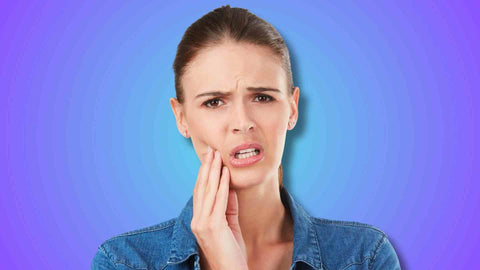
Individuals with allergies to certain oils, such as coconut or sesame oil commonly used for oil pulling, may experience allergic reactions. Symptoms can include itching, rash, or swelling of the mouth or throat. If this sounds like you, make sure to choose an oil that you tolerate well and discontinue use if any allergic symptoms occur.
How to Oil Pull for Great Dental Health
To oil pull effectively, follow these steps:
-
First choose your oil: Select a high-quality, edible oil such as coconut oil, sesame oil, or sunflower oil. Coconut oil pulling is popular due to its pleasant taste and potential antibacterial properties, but oil pulling with coconut oil isn't the end-all-be-all of this practice.
-
Measure the oil: Take about 1-2 tablespoons of oil and put it in your mouth.
-
Swish the oil: Swish the oil around in your mouth for about 15-20 minutes. Be sure to pull the oil through your teeth and around your gums. Avoid gargling or swallowing the oil.
-
Spit out the oil: After 15-20 minutes, spit the oil out into a trash can or tissue. Don't spit it into the sink as it could solidify and clog your drain over time.
-
Rinse your mouth: Rinse your mouth thoroughly with warm water or salt water to remove any remaining oil residue.
-
Don't forget to brush your teeth: Since oil pulling doesn't remineralize teeth, it can't be the only tool in your toolkit. To avoid improper, poor oral hygiene, be sure to follow up with your regular oral hygiene routine, including brushing with toothpaste tablets and flossing.
Repeat this process daily or several times a week for best results. Most people practice oil pulling in the morning before eating instead of at night.
Why should you oil pull on an empty stomach?
Oil pulling on an empty stomach is recommended for several reasons.
First, doing it first thing in the morning allows the oil to effectively "pull" bacteria and toxins that have accumulated overnight, optimizing its cleansing benefits.
Studies suggest that oil pulling can significantly reduce harmful bacteria in the mouth, potentially preventing issues like tooth decay and gum disease.
Additionally, oil pulling on an empty stomach may enhance the absorption of beneficial compounds in the oil, such as lauric acid found in coconut oil, which has antimicrobial properties.
Performing this practice before eating also prevents any food particles from interfering with the oil's ability to cleanse the oral cavity. Research indicates that swishing oil for 15-20 minutes can lead to a noticeable decrease in plaque and gingivitis scores.
Overall, incorporating oil pulling into your morning routine can be a simple yet effective way to promote oral health when done correctly and consistently.
Can oil pulling replace brushing and other dental hygiene practices?
Oil pulling is not recommended as a replacement for brushing or other dental hygiene practices by the American Dental Association (ADA).
While oil pulling may offer some oral health benefits, it is still best to maintain regular dental hygiene practices like brushing and flossing.
Additionally, using an alcohol-free mouthwash is still highly recommended as it reduces bacteria and freshen breath without causing the dryness that alcohol-based rinses may induce.
It complements brushing by reaching areas in the mouth that brushing might miss.
Overall, oil pulling can be an additional step, but it is not a substitute for using an effective mouthwash that promotes overall gum and dental health.
Do dentists approve of oil pulling?
Dentists generally approve of oil pulling as long as it is included in a holistic oral care routine including brushing with nano hydroxyapatite toothpaste, expandable floss, tongue scraping, and using herbal mouthwash.
Many dentists acknowledge that oil pulling may have some potential benefits, such as reducing harmful bacteria in the mouth and promoting oral hygiene. However, the scientific evidence supporting these claims is mostly anecdotal, and more rigorous scientific studies are needed to confirm the effectiveness of oil pulling.
So, be aware that while oil pulling is a safe practice, you shouldn't let it replace traditional oral care methods.
Should I use mouthwash instead of oil pulling?
Yes, you should choose mouthwash instead of oil pulling if you're looking for a convenient, quick, and effective method to freshen your breath.
In comparing mouthwash vs oil pulling, they can both be beneficial for oral health, but they serve slightly different purposes. People typically use mouthwash to freshen breath, kill bacteria, and reach areas of the mouth that may be difficult to clean with brushing and flossing alone.
Can I do oil pulling every day?
Yes, you can oil pull every day, and doing so regularly may offer multiple oral health benefits.
Daily oil pulling with coconut oil can help reduce plaque, bacteria, and gingivitis, it may even reduce bad breath and promote healthier gums when practiced consistently.
Many people find it beneficial to incorporate oil pulling into their morning routine as it helps cleanse the mouth after overnight bacteria buildup.
However, it’s essential to practice oil pulling correctly and not use it as a replacement for regular brushing and flossing.
Should you brush after oil pulling?
Yes, you should brush your teeth after oil pulling for the best oral hygiene results.
While oil pulling helps remove bacteria and toxins from the mouth, brushing afterward ensures that any remaining oil and debris are thoroughly cleaned. Brushing with nano-hydroxyapatite toothpaste provides added protection against cavities and strengthens tooth enamel.
Although oil pulling is a natural method to support oral health, it should work alongside essential practices like brushing, flossing, and regular dental visits.
Alternatively, alcohol-free mouthwash offers similar benefits without risks such as nausea or jaw fatigue that may occur with improper oil pulling. It effectively reduces bacteria, freshens breath, and is gentle enough for daily use.
For optimal results, always consult your dentist before introducing new oral care practices to ensure they suit your needs.
Frequently Asked Questions
Do you brush your teeth before or after oil pulling?
You should brush your teeth after oil pulling to ensure that any remaining oil residue is removed and to maintain overall oral hygiene. Brushing after oil pulling helps eliminate bacteria and plaque effectively. Remember to rinse your mouth thoroughly with water before brushing to remove any lingering oil. This sequence helps maximize the benefits of both oil pulling and brushing.
Can you overdo oil pulling?
Yes, it's possible to overdo oil pulling. While it's generally safe when practiced in moderation, excessively long sessions or frequent oil pulling throughout the day may lead to unintended side effects such as throat irritation or upset stomach. It's recommended to start with shorter sessions (around 10-15 minutes) and gradually increase the duration if desired, but it's important to listen to your body and stop if you experience any discomfort. Like any oral hygiene practice, moderation is key to avoiding potential adverse effects.
How do I know if my oil pulling is working?
You can gauge if oil pulling is working for you by monitoring any subjective improvements in your oral health, such as fresher breath, reduced plaque buildup, or healthier gums. However, it's important to note that while oil pulling may be effective for some individuals, there is a lack of comprehensive scientific studies regarding its efficacy. Therefore, for safe and effective oral care, it's advisable to incorporate other proven methods such as using toothpaste tablets, expandable floss, tongue scraper and alkaline mouthwash to better take care of your overall oral health.
Can you just rinse after oil pulling?
After oil pulling, it's important to spit out the oil rather than just rinsing. This ensures removal of toxins, bacteria, and debris from the mouth. Rinsing with water afterwards helps to further cleanse the mouth and prevent reabsorption of any expelled substances. It also promotes a feeling of freshness. Overall, spitting out the oil followed by rinsing with water is the best practice for effective oral hygiene.
Are there negatives to oil pulling?
While oil pulling may offer potential benefits like reducing plaque and improving gum health, there are drawbacks to consider. These include the lack of scientific evidence supporting its efficacy, the necessity of maintaining traditional oral care practices like brushing and flossing, the time commitment involved in oil pulling, potential discomfort, and the risk of accidental inhalation, particularly for young children or those with difficulty controlling mouth movements. Thus, it's crucial to view oil pulling as a supplementary practice alongside established oral hygiene routines and to consult with a dentist for personalized advice.
What should you not do after oil pulling?
After oil pulling, it's important to avoid consuming food or drinks immediately to allow your mouth to cleanse fully. Wait at least 30 minutes before brushing your teeth to prevent potential enamel damage. Do not swallow the oil during the process, as it may contain bacteria and toxins. While rinsing with water is beneficial, avoid using mouthwash immediately afterward to maintain the effectiveness of the oil pulling.
What does oil pulling actually do?
Oil pulling is an ancient oral health practice that involves swishing oil (usually coconut or sesame) in the mouth for about 15-20 minutes. It is believed to help reduce harmful bacteria, improve gum health, and whiten teeth by removing plaque and toxins. While some users report benefits, scientific evidence is limited, so it should complement regular oral hygiene practices rather than replace them.
What oil do you use for oil pulling?
Common oils used for oil pulling include coconut oil, sesame oil, and sunflower oil. Coconut oil is particularly popular due to its pleasant taste and antimicrobial properties. Sesame oil is also effective and has been traditionally used in Ayurvedic practices.
What is the best oil for oil pulling?
The best oil for oil pulling is typically cold-pressed coconut oil due to its antimicrobial properties and pleasant taste. Other options include sesame oil and sunflower oil, which are also traditionally used in Ayurvedic practices. These oils help remove toxins from the mouth and promote oral health when swished for 15-20 minutes daily.
Should you try oil pulling?
Oil pulling may appeal to those looking for a natural way to support oral hygiene, as it can help reduce bacteria, plaque, and improve gum health, but it is not a replacement for brushing and flossing. While some people find it beneficial, it's important to note that more research is needed to confirm its full range of benefits. For proven effectiveness, it's best to use mouthwash, which is backed by dental research, as it kills bacteria, freshens breath, and helps prevent gum disease; always consult your dentist for the best oral care routine.
What is the danger of coconut oil pulling?
The primary danger of coconut oil pulling is the risk of aspiration, where oil could accidentally enter the lungs, leading to lipid pneumonia, a serious lung infection. Additionally, excessive swishing may cause jaw pain or discomfort, especially for those with TMJ disorders. Coconut oil can also clog drains if regularly spit into sinks, so it’s advised to dispose of it in the trash.
Is 10 minutes of oil pulling enough?
While many people recommend oil pulling for 15-20 minutes to achieve optimal results, 10 minutes can still offer benefits, especially for beginners. Studies suggest that even a shorter duration can help reduce harmful bacteria and improve oral health the full potential benefits, it’s advised to gradually increase the duration as your practice becomes more comfortable.
How soon will I see results from oil pulling?
You may start seeing results from oil pulling within a few days to a week, depending on your oral health needs. Many people report improvements in breath freshness and a reduction in plaque buildup after just a few sessions. However, more significant benefits, such as better gum health and teeth whitening, can take a few weeks of consistent practice. Regular oil pulling over time can lead to a noticeable decrease in bacteria and an overall improvement in oral hygiene.
Is it better to oil pull at night or in the morning?
It is generally recommended to oil pull in the morning, right after waking up and before eating or drinking anything. This is because your mouth accumulates bacteria and toxins overnight, and oil pulling can help remove them before they affect your oral health. Oil pulling in the morning may also help improve overall oral hygiene by reducing plaque and improving gum health. However, oil pulling at night is still beneficial, especially if done as part of a nightly routine to support ongoing oral care.
How do you clean your mouth after oil pulling?
After oil pulling, spit the oil into a trash can to avoid clogging drains, and rinse your mouth thoroughly with warm water. You can use salt water for added cleansing if desired. Finally, brush your teeth to remove any remaining residue and ensure a clean, fresh mouth.
Should I tongue scrape after oil pulling?
Yes, tongue scraping after oil pulling can be beneficial as it helps remove any residual toxins and bacteria that the oil may have loosened. This practice enhances oral hygiene by promoting a cleaner tongue and fresher breath. For best results, follow up with brushing and rinsing your mouth.
Does oil pulling get rid of white tongue?
Oil pulling may help reduce a white coating on the tongue by removing bacteria and toxins that contribute to the buildup. However, it may not completely eliminate white tongue, especially if it's caused by other factors like dehydration or oral health issues. For best results, maintain good oral hygiene practices, including brushing, flossing, and regular tongue scraping.
Does oil pulling damage gums?
Oil pulling, when done correctly, is generally safe and should not damage gums. However, improper technique, such as swishing too forcefully or using excessive amounts of oil, can lead to gum irritation or soreness. For safe practice, gently swish the oil for 15-20 minutes, ensuring not to overexert pressure on the gums.
How long does it take oil pulling to work?
Oil pulling can start showing results after a few days or weeks of consistent use. It helps reduce bacteria, improve gum health, and freshen breath over time, but the full benefits may take a few weeks to notice. For faster results in improving your oral health, it's best to switch to alcohol-free mouthwash to soothe your gums and help maintain fresh breath.
How do I know if my oil pulling is working?
You can tell oil pulling is working if you notice fresher breath, reduced plaque buildup, and healthier-looking gums. Your mouth may also feel cleaner, and you might notice less gum inflammation.
Is 10 minutes of oil pulling enough?
Yes, 10 minutes of oil pulling is usually enough to get the benefits. It’s the ideal amount of time to swish the oil around your mouth and help remove bacteria without overdoing it. For quicker and better results, opt for alcohol-free mouthwash to maintain oral health and keep your mouth fresh.





